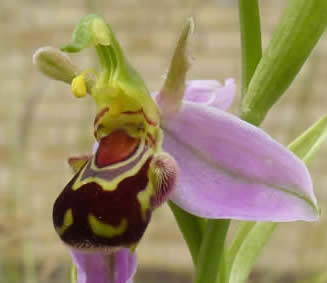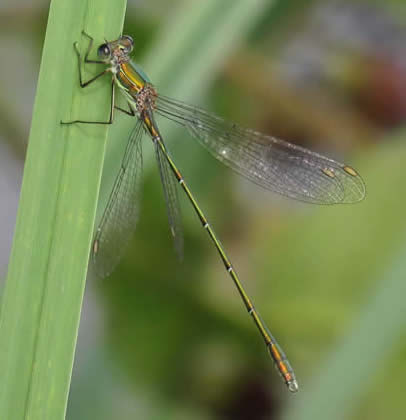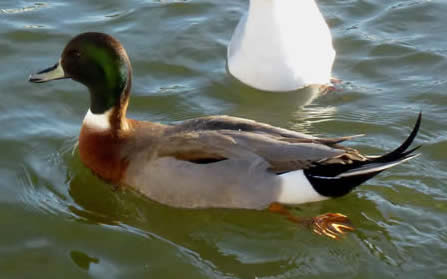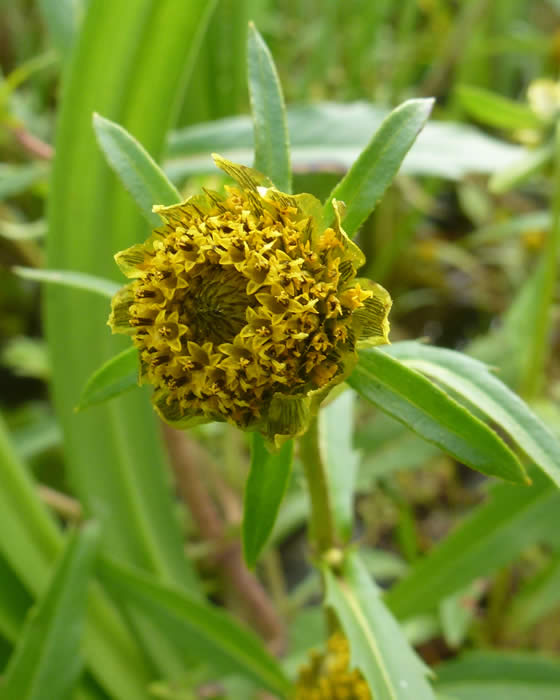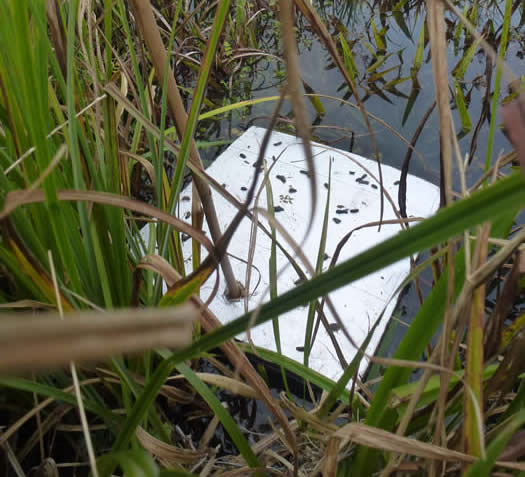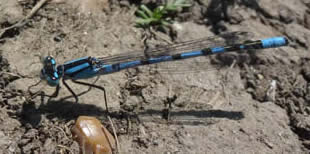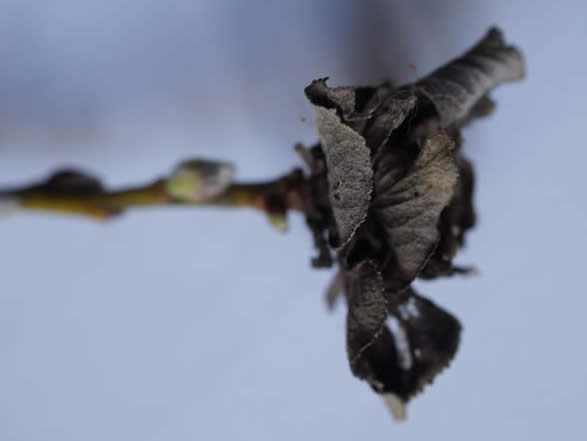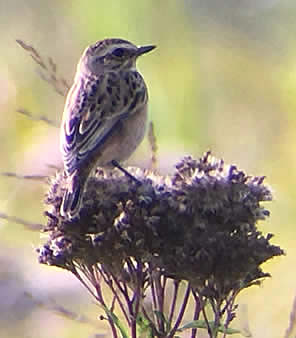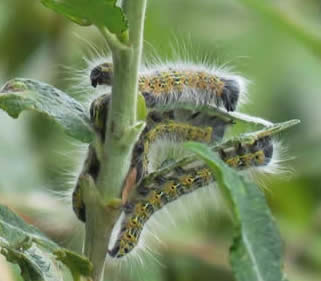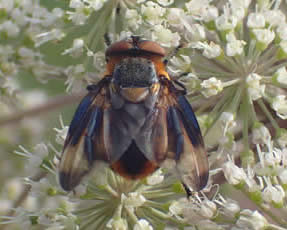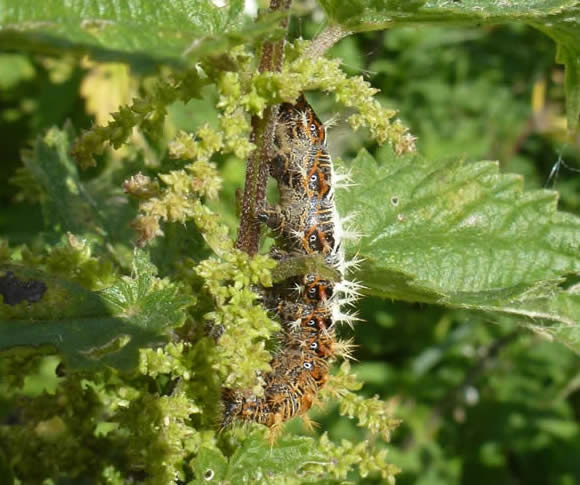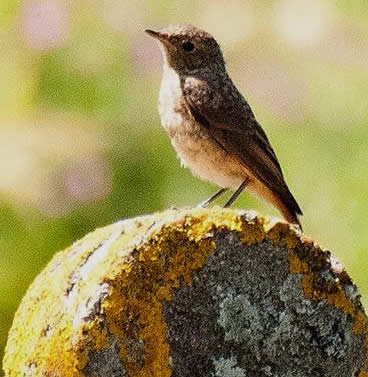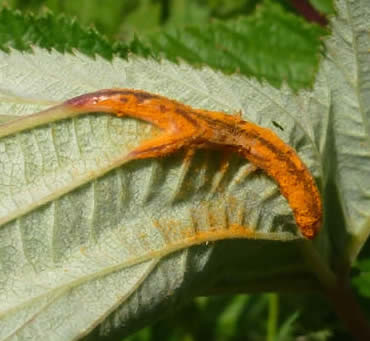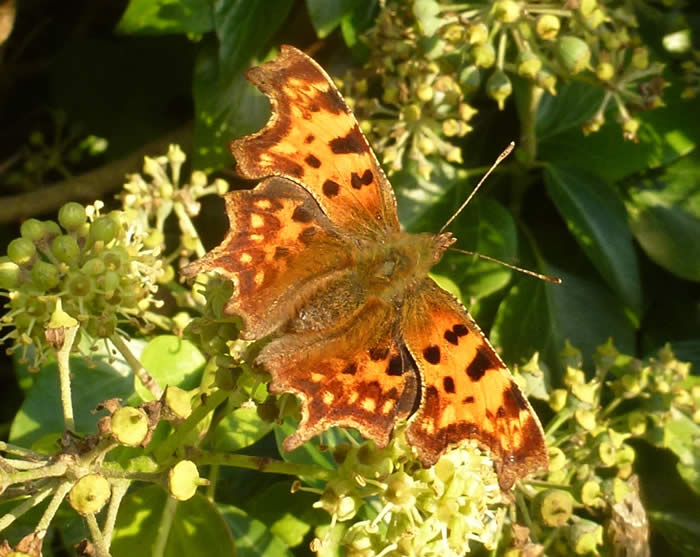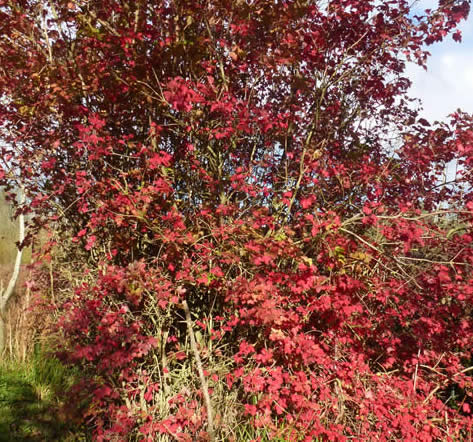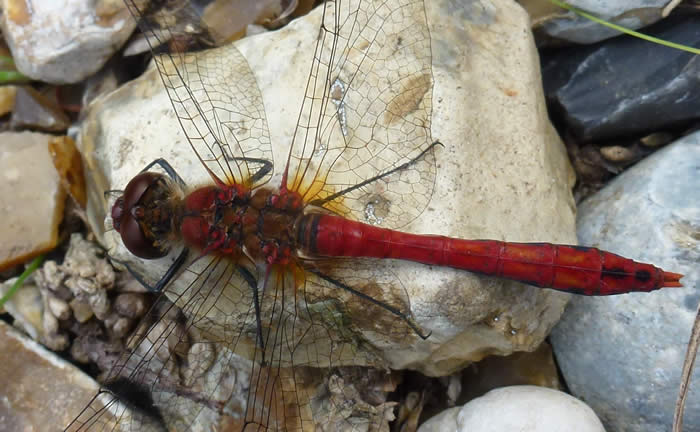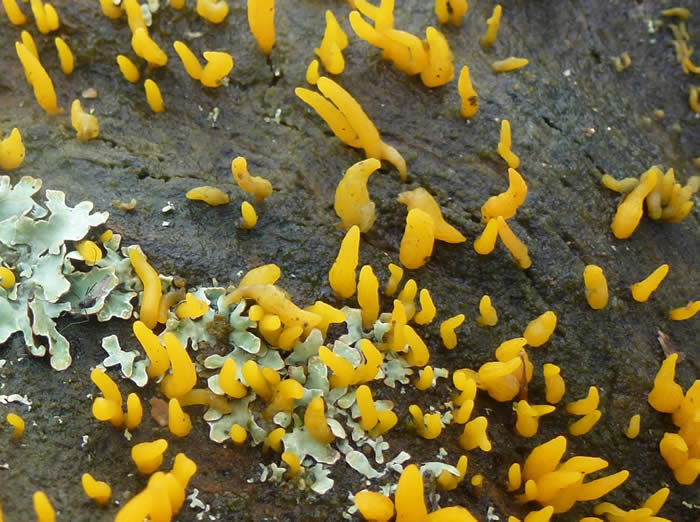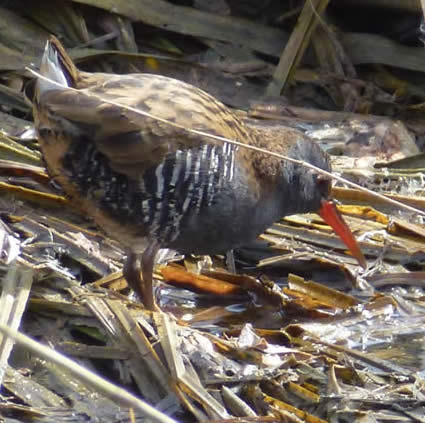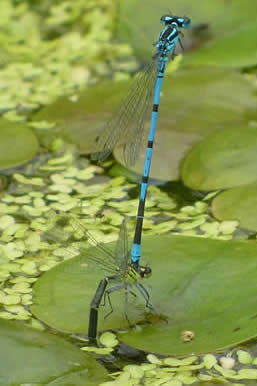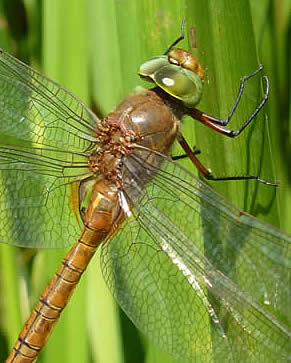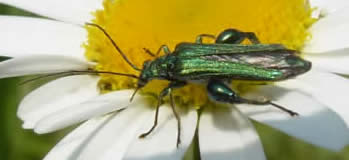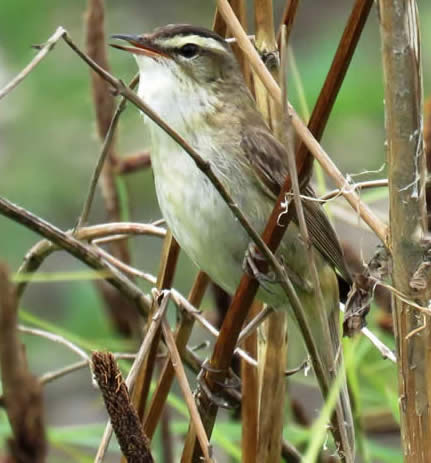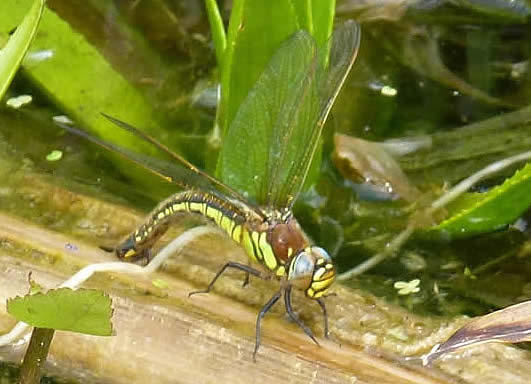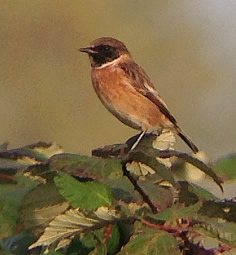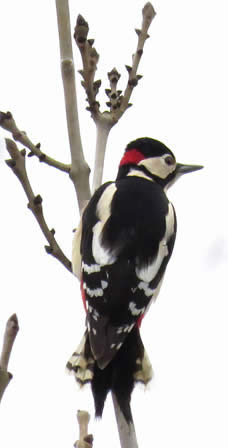NWT Thorpe Marshes
Muddy, no flooding at present. Wellies still advised. 23 December
Thunder Lane is open for two-way traffic and parking again: roadworks finished on Christmas Eve.
The nature reserve at Thorpe St Andrew Marshes – NWT Thorpe Marshes for short – was established in 2011. It's in the Norfolk Broads yet on the edge of Norwich in Thorpe St Andrew. It also happens to be my local patch – just down the road from home and the Honeyguide office, writes Chris Durdin.
Winter — December to February: the refuge value for birds of the marshes and and especially the broad increases when it's cold. Tufted ducks normally outnumber pochards. Teal and snipe numbers build, but vary, and sometimes a scarcer duck like a goosander or goldeneye appears. Cetti's warblers often sing.
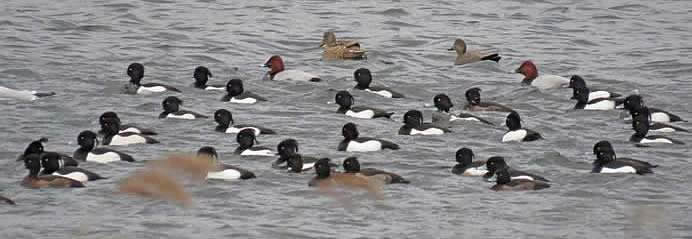
Tufted ducks (mostly), pochards, gadwalls, 24 January 2018 (Derek Longe).
Publications about NWT Thorpe Marshes
James Emerson's The Birds of Whitlingham & Thorpe 2024. This includes bird records for NWT Thorpe Marshes in 2024, and various longer items such as updates on nesting cormorants and herons across the river at Whitlingham CP.
Updated version (June 2020) of Dragonflies and Damselflies of the Whitlingham Area, which has a lot of records and photos from Thorpe Marshes. Report on spiders and related species (April 2020): Arachnids of the Whitlingham area by James Emerson, also includes records and photos from NWT Thorpe Marshes.
There are also Thorpe Marshes wildlife reports for 2012-2019 and previous Whitlingham/Thorpe bird reports. For these, scroll down to 'Wildlife reports & guide'.
Local history
These two blogs give an insight into Thorpe Marshes in the 1960s.
Thorpe Marshes in the 1960s (January 2018) and Thorpe Marshes in the 1960s part 2 (April 2018).
Former railway station: passenger trains ceased in September 1955 and freight in 1964, a local resident advises (22 Oct 2023).
Willow Emerald damselflies
Thorpe Marshes is a great place to see this damselfly in season (late July to October) and to discover more. Willow Emerald egg-laying scars are clear if you know where to look throughout the winter. A local discovery at Thorpe Marshes (January 2018) is Willow Emerald egg-laying scars on domestic apple - a first for the UK. More about this and other unusual places for scars here.
Blogs about Willow Emeralds:
■ What are the chances of that happening? (August 2017) [by Derek Longe].
■ Pretty damsels (September 2016).
■ Willow Emeralds return to Thorpe Marshes (October 2015).
■ A Gem of an Emerald (September 2014).
Gallery of photos of dragonflies and damselflies of NWT Thorpe Marshes on Facebook here includes several Willow Emeralds. A Willow Emerald at Thorpe Marshes on 6 November 2017 appears to be have been the last sighting for 2017 in the UK; there was an even later sighting in 2021, on 9 November.
Willow Emerald Damselfly paper, featuring Thorpe Marshes: "WILLOW EMERALD DAMSELFLY CHALCOLESTES VIRIDIS OVIPOSITING INTO BRAMBLE" by Derek Longe (10MB pdf). In Atropos Issue 58, 2017, and is reproduced here with the kind permission of the editor. See also Derek's NWT blog. Autumnwatch's feature on Willow Emeralds is here on YouTube - the piece on Willow Emeralds starts at 16:26.
Recent sightings
2025
23 December: flock of c.20 linnets flying around railway bridge area.
17 December, guided walk: great egret flying over heading east, flock of pink-footed geese flying west over Thorpe St Andrew, kestrel, reed bunting (often absent in winter), pheasant; kingfisher and Cetti's warbler seen by group members. On St Andrew's Broad: a small group of tufted ducks, 2 gadwalls, 2 little grebes. Fungi: jelly ear, King Alfred's cakes, turkeytail, yellow brain, blushing bracket. A few late flowers e.g. hogweed, bramble.
Yellow brain fungi, also known as witch's butter.
16 December: stonechat; chiffchaff and water rail heard. No ducks.
11 December: 2 chiffchaffs, sparrowhawk, great egret.
Flooded path with heron, 11 December 2025.
4 December: 200 tufted ducks, most flew to (presumably returned to) Whitlingham CP. 2 teals, 1 shoveler, male stonechat.
3 December: red kite (flew east), 2 stonechats, buzzard, 8 teals, 12 tufted ducks, chiffchaff calling.
26 November: marsh harrier, kestrel, sparrowhawk. 3 snipe (presumably more hidden). Bearded tit heard - one 'ping' by the broad. Stonechat, water rail heard. 39 tufted ducks, 2 pochards (1♂, 1♀) 1♂ shoveler, 2 gadwalls in flight, little grebe.
25 November: stonechat, great spotted woodpecker flew over, water rail heard; just 2 gadwalls, 3 tufted ducks.
12 November: 2 stonechats, little egret on river. No ducks. Warden Matt Wickens has seen jack snipe recently.
30 October: 3 snipe, 3 shovelers (2 males). Skylark flew over.
16 October: bearded tit calling in reeds near St Andrews Broad. Snipe, stonechat pair, 15 redwings flying NE, a small group of siskins flying W. Heard redpoll, meadow pipit, water rails. 15 gadwalls, 1 teal, 2 male shovelers, 4 cormorants. A bank vole in the open on the riverside path. Caddis-flies.
9 October: paths under water, see this movie on NWT's Facebook.
8 October: 2 chiffchaffs calling, goldcrest calling near footbridge, 8 gadwalls (which flew off). Willow emerald.
2 October, guided walk: hobby (very good views), 3 snipe, 2 stonechats, little egret, mixed flock of long-tailed and blue tits, chiffchaff, kestrel, buzzard, great spotted woodpecker, green woodpecker heard. Migrant hawker, willow emerald, common darter. Peacock and large white butterflies. Various last-lingering flowers, a varied selection of galls and various other invertebrates (see below).

![]()

24-spot ladybird, cream-spot ladybird on hogweed, spiked shieldbug (Susan Weeks)
30 September: pair of stonechats, 2 gadwalls, 6 cormorants, 1 great crested grebe, chiffchaffs calling and singing, noisy water rails. Migrant hawker, willow emerald, common darter. Caddis flies; peacock and red admiral butterflies.
25 September: 3 tufted ducks, 4 teals, 3 gadwalls, 2 mallards, 4 cormorants, 1 great crested grebe. Kestrel, buzzard, chiffchaffs calling. Migrant hawker, willow emerald.
10 September, guided walk: willow emeralds, common darters, migrant hawkers. Dark bush cricket, dock bug, giant willow aphids, 2 hornets. Water-pepper and redshank growing together. Berries on spindle, woody nightshade, hawthorn and guelder rose. 2 buzzards, 2 Cetti's warblers (seen, which is unusual), several chiffchaffs singing or calling, 3 gadwalls, cormorant. Whitlingham Lane: many ivy bees, hop, 2 toadflax brocade moth caterpillars.
Willow emerald, male: this one was by the railway bridge.
Dark bush cricket, male. Toadflax brocade moth caterpillar, Whitlingham Lane.

Giant willow aphids (Susan Weeks). On the back there is a dorsal tubercle, which in close-up looks like a shark's dorsal fin.
8 September: ivy bees in Whitlingham Lane, willow emerald, buzzard. Chiffchaffs calling. Parent bugs.
25 August: in Whitlingham Lane, magnificent growth of hop; ivy bees (minimum 3), hornet, hornet mimic hoverfly, alder tongue galls. On marshes: 1 red bartsia bee, 1 willow emerald damselfly, chiffchaffs calling.
Ivy bee, Whitlingham Lane.
15 August: 2 little egrets, kestrel, 3 swallows, chiffchaffs calling, brief burst of Cetti's warbler. 2 red bartsia bees. 2 ruddy darters, 1 southern hawker (female), 2 brown hawkers, 7 migrant hawkers, 4 willow emerald damselflies, 3 red-eyed damselflies (lilies on river), 40+ common blue damselflies.
5 August, guided walk: 2 stonechats, common tern, cormorants. Gatekeeper, green-veined white. Few dragons & damsels this windy day: common darter, common blue and red-eyed damselflies. Cluster of early instar parent bugs; bishop's mitre bug (more here). Dock rust; rust on red bartsia is Coleosporium tussilaginis/euphrasiae; sycamore tar spot. Lots of flowers, including marsh sow-thistle and common hemp-nettle. Galls on creeping thistles, oak (marble gall), reed.
Bishop's mitre bug; red bartsia bee on bug box.
29 July: red-eyed and small-red-eyed damselflies still there on vegetation at mooring basin. Female stonechat; great crested grebe on gravel pit. Red bartsia bee, minimum of four.
Red bartsia bee on red bartsia, 29 July.
18 July, guided walk: birds generally quiet now, though heron, cormorants, kestrel, green woodpecker (heard), blackcap (heard), greenfinch, group of 3 chiffchaffs seen and calling. Fleeting views of Norfolk hawker, brown hawker, common & ruddy darter. Red-eyed. small-red-eyed (see below) and common blue damselflies and banded demoiselles. Cinnabr moth caterpillars on groundsel (see photo).
Small-red-eyed damselflies on floating vegetation at the mooring basis, one of at least three pairs egg-laying here, with red-eyed and common blue damselflies nearby for size and other comparisons.
Cinnabar moth caterpillar, one of several on three plants of groundsel (not ragwort) by the mooring basin.
3 July, guided walk: male stonechat, Norfolk hawkers still flying well into evening, probable 5-spot burnet moth and many china mark moths over the water. Plus lots of flowers.
24 June: 12 lapwings heading slowly west, then turned south and flew over the river and the wood at Whitlingham. 3 muntjacs: 2 adults, 1 young. Scarce chaser, 2 males (but it was evening); grasshopper warbler.
21 June: scarce chaser count 8 males; emperor, lots of Norfolk hawkers, black-tailed skimmers. Common, blue, azure, red-eyed and blue-tailed damselflies, banded demoiselles. Heard garden and grasshopper warblers.
20 June: 3 stock doves, marsh tit heard from wet wood by path to Bungalow Lane, garden warbler singing. 43 Norfolk hawkers counted, 5 male scarce chasers, mating pair (and other) black-tailed skimmers.
17 June, morning guided walk: scarce chasers counted and we saw 9 males and 1 female. They have certainly arrived at Thorpe Marshes. Also abundant Norfolk hawkers, black-tailed skimmer, banded demoiselle, common blue, red-eyed, azure and large red damselflies. Commas numerous, also red admiral. Good views of reed bunting and sedge warbler (again). Kingfisher flew past over a sedge bed, buzzard, kestrel, common tern. Two interesting invertebrates from today below, plus thick-legged flower beetle and black and white form of brassica bug. Creeping thistle with pale yellow foliage, by the riverside path, caused by Pseudomonas syringae bacterium.
Cercopis vulnerata black-and-red froghopper; Rutpela maculata, spotted longhorn beetle on valerian.
Scarce chaser, male, 17 June 2025.
Lots of dock rust Puccinia phragmitis today, on both broad-leaved and curled dock. Later in the year this species of fungus moves onto common reed.
16 June, evening guided walk: comma butterfly, peacock caterpillars; numerous Norfolk hawkers. Cuckoo and grasshopper warbler heard. Good views of reed buntings and sedge warbler.
15 June: scarce chasers mating (see photo) and three probable additional male scarce chasers in flight. Norfolk hawkers common; banded demoiselles, common blue, azure and red-eyed damselflies. Cuckoo singing. Report of two cuckoos seen and grasshopper warbler heard. Still sedge and reed warbler song. Comma and red admiral.
Scarce chasers.
11 June: 52 Norfolk hawkers counted; male and female scarce chaser dragonflies (DL).
1 June: male scarce chaser dragonfly (SW). See photo under 'look out for'.
30 May: common tern, garden warbler. kestrel. Norfolk hawker, hairy dragonfly, black-tailed skimmer, lots of banded demoiselles, red-eyed damselfly within the nature reserve (and on river lily pads too). Reed beetles. Valerian coming into flower. Cattle have arrived.
Four British white cattle, early arrivals this year.
21 May, guided walk: cuckoo and garden warbler heard. Female marsh harrier, buzzards, kestrel. Stonechat with recently fledged young. 2 oystercatchers flying over. Otherwise generally as on 20 May.
20 May, guided walk: cuckoo (seen and heard), garden warbler singing in two places, also sedge, reed and Cetti's warbler, blackcap and chiffchaff. Several reed buntings, great crested grebe on gravel pit, several views of herons. Stonechats feeding two young reported (BM). Damselflies (quality of views very varied): common blue (abundant), azure, red-eyed, large red and banded demoiselle. Hairy dragonfly, black-tailed skimmer; four-spotted chaser and Norfolk hawker also seen. Hornet, mint moth, drinker moth (damaged), thick-legged flower beetle; spindle ermine moth and orange tip caterpillars. Willow warblers absent this year (and forever?); where are the usual whitethroats?
14 May, afternoon: sedge, reed, Cetti's warblers, chiffchaff, blackcap singing; heard ring-necked parakeet.
Spindle ermine moth caterpillars, cattle corral; dame's violet by path near first corner.
22 April, guided walk: grasshopper warbler showing well, garden warbler singing, cuckoo heard, water rail seen, female marsh harrier, stacks of sedge warblers. No lesser whitethroat today; whitethroat still absent. Water vole seen by a group member.

Sedge warbler (digiscoped); green-veined white (Tim Harber).
22 April, guided walk: lesser whitethroat and garden warbler, both singing in a big hawthorn by river. Stonechat pair, 4 reed warblers, numerous sedge warblers. 60 tufted ducks, 2 great crested grebes, common tern, 2 buzzards, kestrel, water rail & pheasant heard. Willow warbler seems to be absent this year. Marsh marigold and lady's smock in flower. Alder flies, cream-spot ladybird.
Cream-spot ladybird.
18 April: 3 reed warblers, minimum of 11 sedge warblers, blackcap, chiffchaff, Cetti's warbler, linnet.
3 April: minimum of 114 tufted ducks, 3 teals, pheasant heard, buzzard. No new migrants: east wind doesn't help.
1 April: St Andrew's Broad had 33 tufted ducks, 3 shovelers, 1 teal, 4 gadwalls, great crested grebe. Reed bunting, singing chiffchaffs; heard green woodpecker, water rail & Cetti's warbler.
28 March, a.m. guided walk in mixed weather: pair of stonechats, little egret, reed buntings. p.m: swallow reported (per Norwich birdnews WhatsApp)..
27 March: peacock butterfly, 67 tufted ducks, 25 herring gulls, 2 marsh harriers, 2 buzzards, blackcap singing. Also heard: teal, green woodpecker, grey wagtail and pheasant.
26 March: comma butterfly. 32 tufted ducks, 1 male shoveler, 2 teals, 3 moorhens, 1 coot, 3 cormorants. Linnet; green woodpecker and water rail heard, several chiffchaffs.
20 March: immature male marsh harrier, 2 little grebes. Tufted ducks back to just a handful.
19 March: 3 little egrets together, chiffchaff singing. 2 shovelers, 3 teals, at least 108 tufted ducks. Green woodpecker yaffling, 2 stock doves flying over. Lots of white cherry plum in flower.
7 March: heard bearded tit (frustratingly, just once). Marsh tit in scrub near tidal flap. Great egret, little grebe, 4 teals, 20 tufted ducks. Reed bunting, green woodpecker, 2 kestrels, buzzard. Little egret on Whitlingham side of river, another birdwatcher reported chiffchaff heard singing from across the river. Coltsfoot and cherry plum in flower.
6 March: great egret (at least fourth day running), male stonechat. 48 tufted ducks, 11 teals (more than usual, perhaps disturbed at Whitlingham).
5 March: little grebe trilling, great egret, male stonechat.
4 March: great egret, female stonechat, green woodpecker yaffling, sparrowhawk, buzzard. Six gadwalls in display flight, a handful of tufted ducks still on the broad. Cetti's warbler & water rail heard (as usual). Various birds singing including song thrush (across the river), greenfinch in 3 places, reed bunting (rather half-heartedly), dunnock, robin.
28 February: c.40 meadow pipits late afternoon, a few linnets. Single great egret, which flew to Whitlingham CP. Sparrowhawk, kestrel. At least 46 magpies at dusk, probably more.
11 February, guided walk: 2 great white egrets flying over, then one by Broad, which flew towards Whitlingham. Shelduck in flight, heading east.
Jelly ear and yellow brain fungi, both looking revitalised by recent damp weather.
4 February: male stonechat, kestrel, 60 tufted ducks, 3 teals (perhaps more hidden from view).
30 January: female marsh harrier, male reed bunting, 14 teals, 29 tufted ducks, 15 Canada geese flying east.
29 January: very quiet. One mistle thrush flew over, heading west.
24 January: marsh harrier (usual immature male), male stonechat. Striking absence of ducks, just 3 tufted ducks.
22 January: 4 Egyptian geese flying east, 2 teals, just a handful of tufted ducks, very quiet.
16 January, guided walk: red-necked grebe still present [from 17 January it moved to Whitlingham Country Park, see Evening News story], with large numbers of tufted ducks, a single male pochard. Stonechat pair, grey wagtail, song thrush. Silverleaf fungus Chondrostereum purpureum one of several fungi species (has been recorded at Thorpe Marshes in previous winters).

Silverleaf fungus Chondrostereum purpureum; male stonechat (Derek Longe).
15 January: red-necked grebe (also present 14 January).

Red-necked grebe (Drew Lyness).
14 January: female marsh harrier, grey wagtail, collared dove flying north over reserve, siskin heard. Relatively low numbers of ducks, though including 5 male shovelers (that then disappeared). Great crested grebe in breeding plumage.
11 January, late pm: single bearded tit, c.40 teals, a few shovelers, flock of c.30 linnets, 2 snipe, 2 meadow pipits.
8 January: male marsh harrier, kingfisher, 14 teals, 12 shovelers, 1 male pochard.
7 January: 72 tufted ducks, 2 shovelers, 10 gadwalls, 2 teals (perhaps more out of sight).
3 January: great white egret, 180 tufted ducks, 9 shovelers (most flew to Whitlingham CP), a handul of gadwalls, teals and mallards. Bearded tits heard (MW).
2024
31 December: pair of stonechats, 6 linnets, 37 tufted ducks, a few gadwalls & mallards, great crested grebe, little egret. 60 magpies, pre-roost gathering 3:30pm.
29 December: chiffchaff, great white egret, female marsh harrier, 2 little egrets, female stonechat (JL via Norwich birdnews WhatsApp).
27 December: chiffchaff calling in willow scrub. Great white egret and kingfisher on River Yare, GWE then flew onto reserve. c.35 tufted ducks (probably missed a few), the odd teal and gadwall, 4 shovelers flying over, Egyptian goose in flight, flock of pink-footed geese but invisible in low grey cloud. Kestrel.
23 December: 23 teals, male marsh harrier, green sandpiper flew over.

23 December 2024
17 December: 3 meadow pipits, green woodpecker: On broad: 36 tufted ducks, 2 gadwalls, 6 teals, 4 cormorants, 1 great crested grebe. Several water rails calling. Later: green sandpiper (MW).
11 December, guided walk: 1 great egret, sparrowhawk, buzzard, ring-necked parakeet flew over, great spotted woodpecker (from railway bridge), 16 tufted ducks, a flock of gadwalls flying over, several jays, wrens vocal today. Various galls on plants. Fungi: blushing bracket (see RH column), jelly ear, King Alfred's cakes, turkeytail, yellow brain.



Great egret, great spotted woodpecker, yellow brain fungus (DL).
10 December: 2 great egrets and a grey heron by the broad. 13 tufted ducks, 5 shovelers overhead. Buzzard, kestrel.
Flooded path, 10 December 2024
29 November: bearded tits heard, otter, harvest mouse nest found (MW).
28 November: bearded tits (2+) heard and glimpsed, in sedge. Perhaps silent on recent visits, rather than absent? A few tufted ducks, gadwalls, 2 teal in flight. Yellow brain fungus, if you know where to look.
26 November: 2 marsh harriers (1 female, 1 immature male) hunted then flew west; 2 stonechats, stock dove, 6 shovelers flew west towards Whitlingham CP. Heard pheasant, water rail, Cetti's warbler. A few gadwalls & mallards, five tufted ducks, 1 teal put up by harriers.
18 November: bearded tits heard, 2 stonechats, usual sounds of Cetti's warbler and water rail. Buzzard, sparrowhawk and kestrel. Just a few gadwalls, swans and cormorant on the broad.
13 November: bearded tits heard, stonechat, snipe, meadow pipit. On broad: great egret, gadwalls (a handful), 12 tufted ducks dropped in, first of winter.
Common darter, 13 November 2024.
12 November, guided walk: a group of bearded tits heard, sounded like several. Several buzzards, 2 stonechats here today. Skein of pink-footed geese, c.100, flew west. Shoveler, gadwall and teal on St Andrews Broad, 2 cormorants, 2 mute swans. Still a few caddis flies around.

Bearded tits were being heard and seen regularly at Thorpe Marshes (late October and November). Photo by Barry Madden, taken at Cantley.
9 November: Bearded tits still at Thorpe Marshes this afternoon, calling; 3 shovelers. Flock of starlings went to roost in reedbed, not counted, perhaps 80. Water rail and Cetti's warbler vocal as usual.
7 November: 5 bearded tits, chiffchaff, 2 stonechats (Norwich birdnews WhatsApp group).
5 November: at least three bearded tits: adult pair plus another calling. 2 mistle thrushes joined 6 redwings high in a tree by railway line. Little egret flew west; sparrowhawk and kestrel; great spotted and green woodpeckers. 6 gadwalls on gravel pit feeding with swans. Usual sounds of water rail and Cetti's warbler.
31 October: very quiet on the marshes, though 22 fieldfares flying west over Yarmouth Road.
25 October: 2 bearded tits calling from reedbed by railway line. Marsh harrier, 2 skylarks over, marsh tit in trees by river, water rail and Cetti's warbler heard, long-tailed tits, kestrel. Lots of caddis-flies, several migrant hawkers. 2 great white egrets (MW).
11 October, guided walk: water rail, Cetti's warbler (both heard), long-tailed tit, kestrel, buzzard, great crested grebe on river, several cormorants. Several galls, caddis-fly, nursery web spider, comma butterfly. Ivy bee, Whitlingham Lane.



Caddis-fly, cinnamon sedge type; spiked shieldbugs; comma butterfly (all by Derek Longe).
9 October: great spotted woodpecker, water rail, Cetti's warbler, 7 magpies, grey wagtail by river.
29 September: water rail calling, Cetti's warbler singing, chiffchaff, heron, cormorant, 1 great crested grebe on gravel pit. Still ivy bees in Whitlingham Lane.
Water scorpion at this morning's pond-dipping session, the last of the year.
24 September: still ivy bees in Whitlingham Lane. Stonechat, Cetti's warbler singing, chiffchaff. Migrant hawker & common darter.
9 September, guided walk in rain: 2 swallows, chiffchaffs, heron, 2 cormorants. Still many flowers, and some berries e.g. spindle, guelder rose and woody nightshade.
31 August: ivy bee on ivy in Whitlingham Lane. No red bartsia bee, just common carder bees on the red bartsia.
Ivy bee on ivy in Whitlingham Lane.
23 August: 2 red bartsia bees (1 by corral, 1 on marsh path). Norfolk hawker (late for this species) migrant hawkers, common and ruddy darters. Chiffchaffs.
Galls on female alder catkins, caused by the fungus Taphrina alni.
Parent bug, final 'instar' (last juvenile version before becoming adult bug). Probably the same group of bugs as seen on 6 August.
Cattle have arrived: four British whites (one is out of shot). More photos on Facebook, August 2024.
16 August: several red bartsia bees (see below). 2 x emperor dragonflies, brown hawker egg-layer, migrant hawkers, common darter.
Red bartsia bee, probably a female from the not very white abdominal bands.
6 August, guided walk: four-spot orb-weaver spider Araneus quadratus. Norfolk & brown hawkers, black-tailed skimmer, common blue and red-eyed damselflies, single (and first of year) willow emerald, banded demoiselles. Groups of long-tailed tits, calling chiffchaff, great spotted and green woodpecker, cormorants. Dingy footman moth Eilema griseola; hornet mimic hoverfly, parent bug. Lots of flowers: a few (of many) discussed included gipsywort, square-stemmed St John's wort, arrowhead, common hemp-nettle.

Bug Adelphocoris ticinensis, found, identified and photographed by Susan Weeks (and verified through iRecord). It's described as a 'scarce' species by British Bugs.
30 July: 2 small red-eyed damselflies again in the mooring basin; 26 Norfolk hawkers counted.
29 July: still many Norfolk hawkers on the wing, plus black-tailed skimmer and brown hawker. Damselflies: 2 small red-eyed damselflies on floating vegetation in the mooring basin, five banded demoiselles on a sunny ditch by the riverside path, plus red-eyed, common blue and blue-tailed damsels. 2 sparrowhawks.
Small red-eyed damselfly.
8 July, evening guided walk: barn owl, pair of stonechats, reed buntings, bursts of song from reed & sedge warblers, chiffchaff and blackcap. Lots of red soldier beetles on hogweed.
21 June, evening guided walk: two stunning flypasts by a barn owl at 20:00 and 21:30. Oystercatcher over twice, ditto common tern, great white egret flew east along river, kingfisher, heron; singing garden, sedge, reed, willow and Cetti's warblers plus chiffchaff and blackcap. Thick-legged flower beetle, dock bug, 100s of peacock caterpillars. Spiders: large-jawed orb-web spider, and the spider pictured below. Plus lots of flowers!
Peacock butterfly caterpillars; shaded broad-bar moth (unless anyone suggests a better ID); best guess on the spider is an oddly-coloured garden spider.
20 June, midday: still bird song, including willow, reed and sedge warblers, blackcap, chiffchaff, reed bunting; water rail calling. Lots of Norfolk hawkers.
9 June: c.20 sand martins and few house martins on a cool day. Evening: 150-200 swifts 3 cuckoos together (SW).
29 May: cuckoo calling from Whitlingham side of the river, pair of stonechats, water rail called. Pair of tufted ducks (non-breeders?) Norfolk hawker, spindle ermine moth caterpillars.
Common malachite Malachius bipustulatus 29 May 2024, on ox-eye daisy.
22 May, guided walk (rain predicted but none came): cuckoo, 2 herons, lots of swifts and sand martins, singing sedge, reed, willow and Cetti's warbler, chiffchaff and blackcap; reed buntings, song thrushes. oystercatcher flying over. Fungi: additional set of King Alfred's cakes. still yellow brain, jelly ear looking good. Hairy dragonfly, azure & common blue damselflies, banded demoiselle. Dame's violet has gone. Mayfly and alder fly; froghopper Cercopsis vulnerata seen again; spindle ermine moth caterpillars.

Hairy dragonfly, perched in the gloomy conditions.
19 May: hairy dragonfly (about 10); large red, common blue, azure & red-eyed damselflies, and banded demoiselle. Two cuckoos, including 'bubbling' female, female marsh harrier, singing willow warbler (and various others).
Two interesting finds: dame's violet Hesperis matrionalis and on the dame's violet, the froghopper Cercopsis vulnerata.
3 May, guided walk for Friends of Horsey Seals on a wet morning: cuckoo seen well and singing, pair of stonechats, single gadwall, several swifts over River Yare with swallows and house martins; orange-tip butterfly and egg.
1 May, afternoon: sedge, reed, willow & Cetti's warblers, chiffchaff, whitethroat. Cuckoo calling, male stonechat, gadwall flying over marshes (breeding?), pair of tufted ducks on the broad (late winter birds?). Recent reports of grasshopper warblers.
23 April, guided walk: lesser whitethroat singing from riverside scrub, great white egret flew over, heading east. Also common whitethroat, willow warbler, chiffchaffs, blackcap, Cetti's warbler, lots of sedge warblers, stonechat pair, 2 swallows, reed bunting.
20 April: female marsh harrier, lots of sedge warblers singing, willow warbler, chiffchaff, blackcap, Cetti's warbler, reed bunting, 27 tufted ducks, 1 gadwall.
1 April: 7 shovelers, sedge warbler reported again.
31 March: 2 sedge warblers singing (SW via Norwich birdnews WhatsApp group).
28 March, guided walk: white stork reported - we missed it. Red kite over, 3 buzzards, 2 stonechats, 6 shovelers (4♂, 2♀), blackcap heard from across the river, good view of perched kingfisher. Singing Cetti's warbler, dunnock, greenfinch, chiffchaffs etc. Flowers: lesser celandine, coltsfoot, few-flowered leek. Invertebrates: 24-spot ladybird, hairy-footed flower bee, pied shieldbug, alder fly, nursery web spider.
Two galls looked at today. Left: fungi Melampsora populnea on dogs mercury. Right: fly Rabdophaga rosario on willow.
26 March: 2 little grebes (quite vocal), 3 great crested grebes, 2 ♂ pochard, 4 shovelers (3♂, 1♀). No hirundines. Sedge warbler heard (via Norwich birdnews WhatsApp group).
25 March: 2 swallows, great white egret (via Norwich birdnews WhatsApp group).
23 March: swallow (SW, via Norwich birdnews WhatsApp group), exceptionally early record.
17 March: chiffchaff singing in two places, 15 meadow pipits, 1 ♂ shoveler, cormorant carrying stick flying towards Whitlingham CP, reed bunting in song and 2 others, 2 oystercatchers flew up river.
5 March: 35 meadow pipits, 2 collared doves over (from N to S), vocal green woodpecker and song thrush, 4 ♂ shovelers.
28 February: 15 pochards (14 males), first I've seen all winter. Still 5 shovelers (4♂, 1♀), 2 little grebes. Sparrowhawk, 3 (probably 4) buzzards.
23 February: at least 9 shovelers (8 ♂, 1♀); water rail calling in two places.
16 February, on (cancelled) guided walk: singing linnet, greenfinch and green woodpecker; 3 shovelers still, 3 buzzards over.
15 February: coltsfoot and cherry plum in flower. Flock of 18 linnets. Song thrush, Cetti's warbler, robin, dunnock, wren in song; water rail calling in two places. 96 tufted ducks, 35 gadwalls, 12 teals, 3 shovelers, 3 mallards, 1 coot (minima).
White flowers now are cherry plum, not blackthorn.
12 February: 2 male shovelers, good numbers of tufted ducks, gadwalls, teals (not counted), great crested grebe, buzzard.
6 February: little grebe, great crested grebe in breeding plumage. Ducks in lower numbers now: 62 tufted ducks, 13 gadwalls, c.10 teals, 4 mallards, pair of shovelers.
2 February: marsh harrier, great white egret (WhatsApp reports); buzzards, 2 stonechats (pair).
1 February: few ducks than yesterday, though at least 8 shovelers still present.
31 January: great white egret on edge of broad, flew west towards Whitlingham CP. 2 wigeons, 10 shovelers, c.150 tufted ducks; teals and gadwalls not counted.
26 January: 1+5 snipe flying from marshes. 40 teals, 13 shovelers, c.250 tufted ducks, gadwalls not counted (c.40), all ducks very mobile this morning.
24 January: milder weather and duck numbers have mostly dropped, though still 146 tufted ducks, 2 male shovelers, a few teals calling; little grebe, great crested grebe. Siskin in trees by railway bridge.
19 January: smew still in SE corner of broad 12.45pm, 178 teal, 21 shoveler, marsh harrier (Stuart White).
18 January, guided walk, restricted to riverside path: redhead smew, far end of St Andrews Broad. Male shoveler, good numbers of teal, a few gadwalls, some tufted ducks (not counted). Snipe, buzzard, heard pheasant, water rail and Cetti's warbler. reed bunting. Fungi: yellow brain, coral spot, turkeytail, King Alfred's cakes and jelly ear.
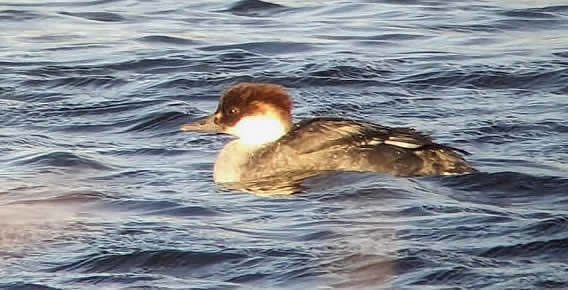
Today's smew (Stuart White).
16 January: 53 teals, 67 tufted ducks, 15 gadwalls. Female sparrowhawk, snipe.
10 January: chiffchaff, trees by railway bridge. 19 gadwalls, c.30 teals, 2 mallards, just 9 tufted ducks (must all be at Whitlingham CP). Buzzard.
3 January: 227 tufted ducks. A few mallards and teals, no other duck species. Song thrush singing.
Sightings from 2012 - 2023 here.
Wildlife reports & guide
Guide: click here to see NWT Thorpe Marshes map and guide.
2023 James Emerson's The Birds of Whitlingham & Thorpe 2023.
2022 James Emerson's The Birds of Whitlingham & Thorpe 2022.
2021 James Emerson's The Birds of Whitlingham & Thorpe 2021
2020 James Emerson's The Birds of Whitlingham & Thorpe 2020
2019 Thorpe Marshes wildlife report for 2018-19
James Emerson's The Birds of Whitlingham & Thorpe 2019
2018 James Emerson's The Birds of Whitlingham & Thorpe 2018.
2017 Thorpe Marshes wildlife report for 2017.
James Emerson's Whitlingham Bird Report 2017.
2016 Thorpe Marshes wildlife report for 2016.
James Emerson's Whitlingham Bird Report 2016.
2015 Thorpe Marshes wildlife report for 2015.
James Emerson's Whitlingham Bird Report 2015.
2014 Thorpe Marshes wildlife report for 2014.
James Emerson's Whitlingham Bird Report 2014.
2013 Thorpe Marshes wildlife report for 2013.
James Emerson's Whitlingham Bird Report 2013.
2012 Thorpe Marshes wildlife report for 2012.
James Emerson's Whitlingham Bird Report 2012.
Reports are in PDF format.
Wildlife habitats
The three key habitats at Thorpe St Andrew Marshes are the ditches, gravel pit and grazed marshes - see below.
Other habitats, which are all part of the rich mix, include:
- rough marsh of willowherb and nettles, attracting many sedge warblers
- sallow (pussy willow) scrub, good for Cetti's warbler
- the adjacent tidal River Yare
- adjacent wet woodland
- areas of reed, including a reed rond on the river, attracting reed warblers.
Ditches
Many ditches – also called dykes in Norfolk – have abundant water soldier and frogbit, both aquatic plants. These are indicators of good water quality. In the Broads, the occurrence of the Norfolk hawker dragonfly, which is the symbol of the Broads Authority, is strongly linked to water soldier. The best place to see these is over the ditches close to the cattle corral. Water rails and water voles use the ditches, though both are difficult to see. |
Ditches rich in water soldier (left), water mint (centre) and frogbit (right).
Gravel pit
Gravel extraction – as at Whitlingham Country Park across the river – has led to the creation of a lake, which has filled naturally with river water. Some may call this a ‘broad’: the true broads are man-made, too, though from flooded peat diggings, and typically are much shallower.
Gulls over the gravel pit, December 2011
The gravel pit here attracts wintering ducks, especially tufted ducks (picture below), pochards and gadwalls, moving between here and the Country Park. Unusual ducks call in at times, including smew, goldeneye, red-crested pochard and ferruginous duck over the 2011/12 winter.
Gravel beaches attract ‘loafing’ ducks and wading birds, which include little ringed plovers in spring/summer. Stock doves often feed on plant seeds on the gravel.
Grazed marshes
Livestock are essential to manage the open grazed marshes habitat.
Without them, thick grasses and sedges would dominate even more, and would in time be taken over by scrub. More heavily grazed and trampled areas have a distinct structure of lumps and hollows that attract feeding snipe, and have flowers such as marsh marigold and lady’s smock. |
The flood: the grazing marshes include a 'flood', periodically under water, then drying out, here with a greylag goose and mallards in March 2012. The bright green shoots are emerging yellow flag iris plants.



